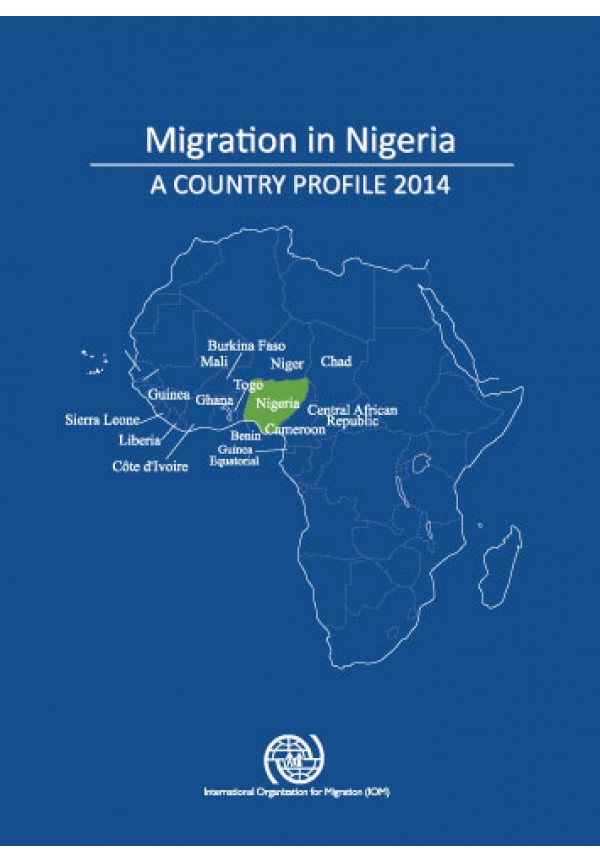
18 Feb 2016
Migration in Nigeria: A Country Profile 2014
Migration has become an increasingly important issue affecting many countries, and it is important for accurate and reliable migration data to be produced by government to inform policy making. In Nigeria, the Technical Working Group (TWG) on Migration and Development, consisting of different government ministries, was established during the process of developing the profile to ensure ownership of the whole process of production and usage of the data.
A migration profile for Nigeria was first published in 2009 to provide a quick reference tool and support evidence-based policymaking on migration. The 2014 country migration profile for Nigeria is therefore an update of the 2009 version. With improved inter-agency collaboration and information-sharing through the TWG on Migration and Development, the process of compiling the 2014 country migration profile for Nigeria was better coordinated and conducted in a more effective manner.
The updated migration country profile is a quick reference tool carefully compiled by the TWG on Migration and Development in Nigeria to support evidenced-based policymaking on migration. It contains statistical overview, trends and analysis of migration issues in the country. The profile is divided into four parts, namely, migration trends and migrant characteristics, impact of migration, migration governance, and key findings and policy implications and recommendations.
The recommendations on the interventions that need to be in place and the need for constant update of the national migration profile are also further explained in the report.
Read More
- Interministerial Technical Working Group Members In Nigeria
- List of Tables and Figures
- Abbreviations and Acronyms
- Foreword
- Message from the National Commission for Refugees, Migrants and Internally Displaced Persons
- Country Map and Key Statistics
- Executive Summary
- Part A: Migration Trends and Migrant Characteristics
- A.1. Key Drivers of Migration and General Cross-border Mobility
- A.1.1. Political Environment
- A.1.2. General Economic Situation
- A.1.3. Labour Market Dynamics
- A.1.4. Labour Force Participation
- A.1.5. Self-employment in Nigeria: Income and Productivity
- A.1.6. Unemployment Challenge
- A.1.7. Youth Unemployment
- A.1.8. Job Creation
- A.1.9. Poverty in Nigeria
- A.2. Immigration
- A.2.1. Foreign and Foreign-born Population and Immigration
- A.2.2. Immigration for Employment
- A.2.3. Immigration for Study Purposes
- A.2.4. Involuntary Immigration
- A.3. Emigration
- A.3.1. Citizens Residing Abroad and Emigration
- A.3.2. Emigration for Employment
- A.3.3. Emigration for Study Purposes
- A.3.4. Involuntary Emigration
- A.4. Irregular Migration
- A.5. Return Migration
- A.6. Internal Migration in Nigeria
- A.6.1. Involuntary Migration
- A.1. Key Drivers of Migration and General Cross-border Mobility
- Part B: Impact of Migration
- B.1. Migration and Human Development
- B.2. Migration and Economic Development
- B.3. Migration and Social Development
- B.4. Migration and Health
- B.5. Migration, Employment and the Labour Market
- B.6. Migration and the Environment
- Part C: Migration Governance
- C.1. Policy Framework
- C.2. Laws and Regulations (National, Regional and International)
- C.3. Institutional Framework
- C.4. International Cooperation
- Part D: Key Findings, Policy Implications and Recommendations
- D.1. Main Findings on Current Trends, Migration Policies and Impact of Migration
- D.2. Recommendations on Migration Governance Framework
- D.3. Recommendations on Mainstreaming Migration into Development Policies
- D.4. Recommendations on Improvements to Migration Statistics and the Overall Evidence Base
- References
- Appendix